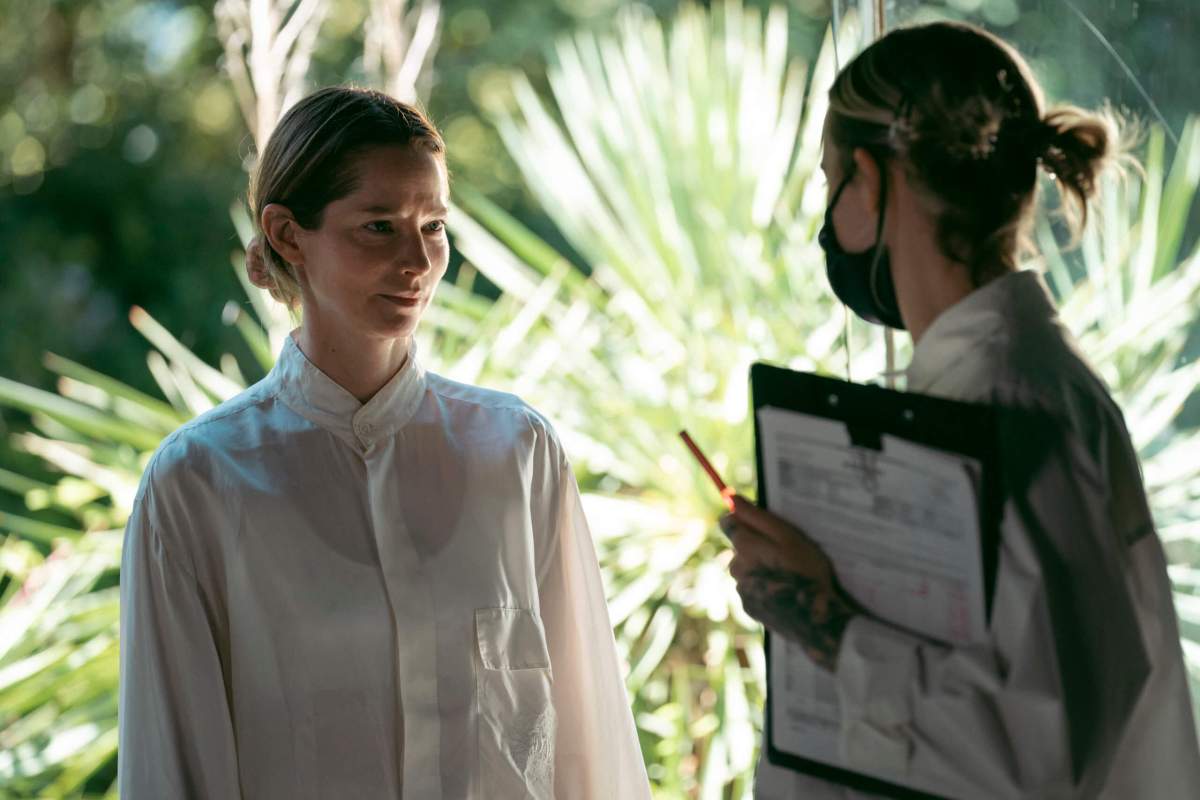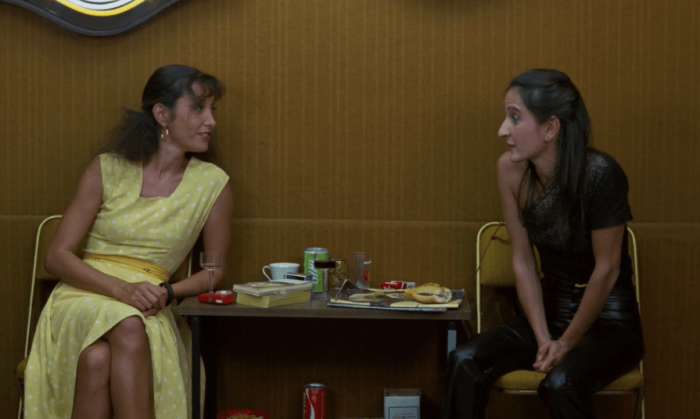The American opening of Paul Verhoeven’s “Benedetta” has been trailed by controversy. A Catholic group showed up to its New York Film Festival premiere last September to protest it. Even before then, the Atlantic ran an interview with the priest James Martin, who expressed his outrage over the scene where two nuns find an exciting and pleasurable new use for a Virgin Mary statue. That scene’s notoriety threatens to overshadow the film.
Nunsploitation has existed as a sub-genre for at least 50 years. Compared to the most outrageous ‘70s examples, “Benedetta” is actually quite tame, determined to show its good intentions. Kristin Kobes du Mez’s book “Jesus and John Wayne” outlines the relationship between evangelical Christianity and conservative American pop culture. She suggests that Mel Gibson has taken over from Wayne as right-wing Christians’ favorite actor and director. The fact that anyone would be cool with Gibson’s brutal wallow in torture with “The Passion of the Christ,” which ignores Jesus’ teachings to reduce him to a piece of bleeding meat, but furious at this far less violent film for its sympathetic depiction of sexually active lesbians exposes their hypocrisy.
The real biography of Benedetta Carlini (Virginie Efira) matched the outline, if not all the details, of her fictionalized version’s story. First seen as a child, she came from a well-to-do Italian family. “Benedetta” picks up with her as a young nun. While men are seen as sources of violence, the all-female environment of the convent is no paradise. Its inner politics hint at the backstabbing of “Showgirls.” Italy is in danger from bubonic plague. Benedetta performs apparent miracles and has an unusually vivid inner life, but she also falls in love with Bartolomea (Daphné Patakia), who ends up betraying her to the church’s male leaders (embodied at their most villainous by out bi French actor Lambert Wilson).
Film critic Adam Nayman, whose monograph on “Showgirls” has helped enhance that film maudit’s reputation, wrote that Verhoeven’s American films gave him a coherent identity he never found working in his native Netherlands. “Robocop,” “Total Recall,” and “Basic Instinct” succeeded in playing it both ways, satirizing Americans’ appetite for sex and violence while catering to it. With “Showgirls,” that connection to a mass audience started slipping. He returned to the Netherlands after the 2000 “Hollow Man,” but the freedom to ignore the MPA’s ratings constraints hasn’t turned into an ability to make as many films as he’d like. “Benedetta” is only his third feature since he came back to Europe.
Verhoeven’s model seems to be Ken Russell’s 1971 “The Devils,” which scandalized Warner Brothers so much they still refuse to release its uncut version in the US. But “Benedetta” may be too polished for its own good. On the surface, it’s gritty and earthy. (In an interview in Cineaste magazine’s winter issue, Verhoeven points to scatological imagery in Rembrandt and Bosch paintings as examples of Dutch art’s grit.) In its first few moments, a bird defecates on someone’s face and a man lights his farts on fire. Women wipe their asses with rough straw after using the latrine. But the stars are thin and pretty in a way that looks more 2021 than 1621. Despite the period’s lack of electricity, the film is carefully lit so that the actors’ faces remain visible. (In that same issue of Cineaste, J.E. Smyth points to the influence of painter Artemisia Gentileschi.) However, given Verhoeven’s long stretch in Hollywood, it’s not surprising that “Benedetta” looks so slick. His 2006 “Black Book” shares the Indiana Jones films’ kinetic excitement but uses it to depict moral grey areas and historical compromise during World War II.
“Benedetta” refers to several Hollywood classics. The Mother Superior’s staring at nude women through a peephole suggests Norman Bates’ behavior in “Psycho.” Benedetta’s switch to a deep, more masculine-sounding voice when supposedly possessed by the spirit of Jesus hints towards “The Exorcist.” But it attempts to do something far more subversive around gender and sexuality. The limits of this endeavor are suggested by the softcore grappling of the film’s one major sex scene. “Benedetta” is obviously a film made by a horny straight guy. But that doesn’t mean he lacks empathy for the dilemma of his lesbian characters.
Benedetta sees no contradiction between sexual and spiritual rapture. To her, using a Virgin Mary statue as a sex toy is far from blasphemy. (A later scene in which she’s tortured by a man with a phallic device reverses the earlier consensual pleasure she experiences.) She also frequently slips between fantasy and reality, dreaming and hallucinating the presence of Jesus (shown as Western media’s same old hunky, white hippie). Surprisingly, “Benedetta” takes her will to live her life according to her religious desires, even when they conflict with a contemporary idea of a happy ending, very respectfully. In its 17th-century Italy, sex, religion, and politics are inseparable, despite the amount of damage this does to its characters’ lives. In the world where “Benedetta” is being released, how much has really changed?
BENDETTA | Directed by Paul Verhoeven | In French with English subtitles | IFC Films | Opens Dec. 4th at the IFC Center



































